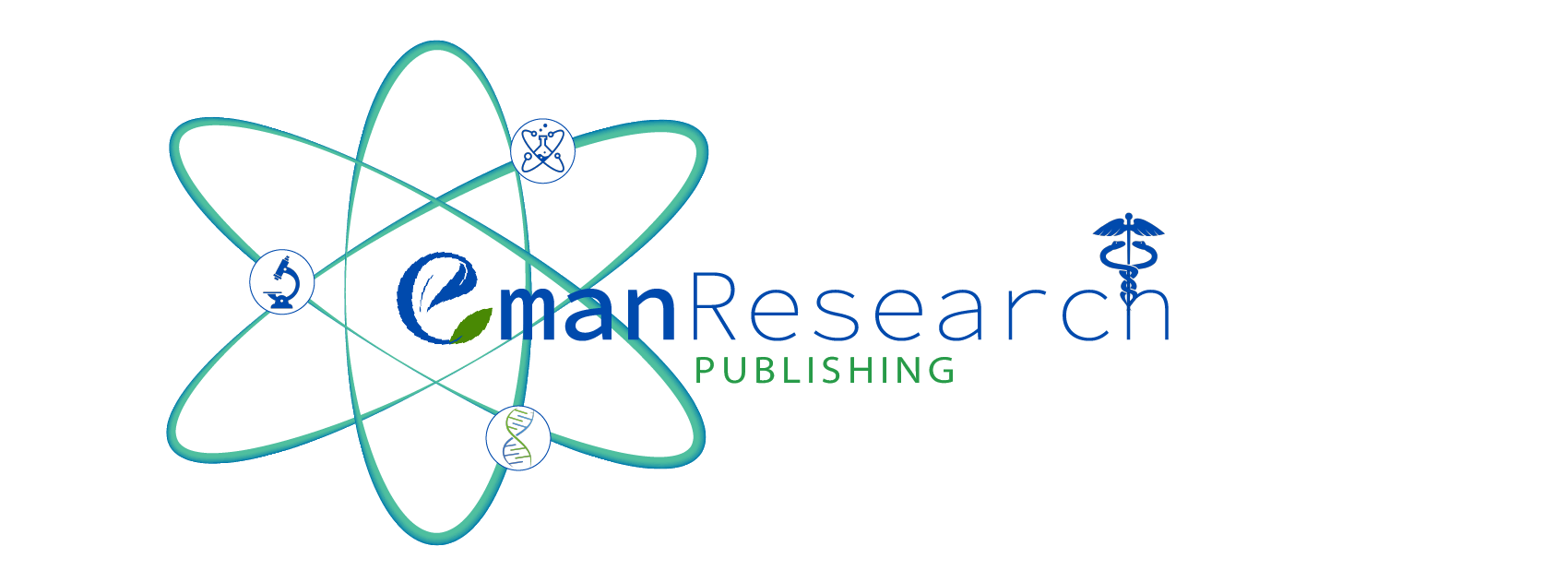Identifying Thyroid Dysfunction Using Standard Laboratory Testings – A Systematic Review
Vinay Jaiswal 1, Prachi Gurudiwan 2
Integrative Biomedical Research 7(2) 1-8 https://doi.org/10.25163/angiotherapy.729409
Submitted: 12 November 2023 Revised: 15 December 2023 Published: 19 December 2023
A ML-TDI model for thyroid dysfunction identification, addressing underdiagnosis challenges and emphasizing the importance of comprehensive assessment in care.
Abstract
Thyroid dysfunction includes various thyroid-related illnesses, with subclinical hypothyroidism or hyperthyroidism at the initial stage. Blood TSH and T4 levels indicate a neutral ground between clinical conditions. Following guidelines for levothyroxine administration based on thyroid hormonal levels is beneficial for hypothyroid patients. TSH, a measurable signal, is crucial for assessing thyroid activity, with reference ranges determined by testing facilities. However, elevated TSH levels require consideration of the patient's history and lifestyle before intervention. A Machine Learning-based Thyroid Dysfunction Identification (ML-TDI) model was developed to screen individuals for medicinal intervention. Despite its prevalence and health consequences, thyroid dysfunction often goes undiagnosed. The study used standard laboratory data and machine learning algorithms to identify thyroid dysfunction, suggesting the potential for technology-driven screenings during routine medical procedures. However, assessing the benefits and risks of widespread thyroid illness evaluation requires well-conducted randomized trials.
Keywords: ML-TDI, TSH, Thyroid, hypothyroidism
References
Akash, K. T., Usman, F. M., Kumar, T. N., Ahmed, M. R., & Gudodagi, R. (2023). Predicting Thyroid Dysfunction Using Machine Learning Techniques. In 2023 12th International Conference on Advanced Computing (ICoAC), 1-8. IEEE.
Almahshi, H. M., Almasri, E. A., Alquran, H., Mustafa, W. A., & Alkhayyat, A. (2022). Hypothyroidism prediction and detection using machine learning. In 2022 5th international conference on engineering technology and its applications (IICETA), 159-163. IEEE.
Alyas, T., Hamid, M., Alissa, K., Faiz, T., Tabassum, N., & Ahmad, A. (2022). Empirical method for thyroid disease classification using a machine learning approach. BioMed Research International, 2022.
Aversano, L., Bernardi, M. L., Cimitile, M., Iammarino, M., Macchia, P. E., Nettore, I. C., & Verdone, C. (2021). Thyroid disease treatment prediction with machine learning approaches. Procedia Computer Science, 192, 1031-1040.
BHARADWAJ, K. J., REDDY, N. D., & SRINIVAS, P. J. (2023). UTILIZING MACHINE LEARNING FOR THE DETECTION OF THYROID DISORDERS. Machine learning, 52(4).
Brilli, L., Danielli, R., Campanile, M., Secchi, C., Ciuoli, C., Calabrò, L., ... & Castagna, M. G. (2021). Baseline serum TSH levels predict the absence of thyroid dysfunction in cancer patients treated with immunotherapy. Journal of Endocrinological Investigation, 1-8.
Chaganti, R., Rustam, F., De La Torre Díez, I., Mazón, J. L. V., Rodríguez, C. L., & Ashraf, I. (2022). Thyroid disease prediction using selective features and machine learning techniques. Cancers, 14(16), 3914.
Chen, H., Chen, C., Wang, H., Chen, C., Guo, Z., Tong, D., & Lv, X. (2020). Serum Raman spectroscopy combined with a multi-feature fusion convolutional neural network diagnosing thyroid dysfunction. Optik, 216, 164961.
Danjuma, K. J., Wajiga, G. M., Garba, E. J., Ahmadu, A. S., & Longe, O. B. (2022). Accuracy assessment of machine learning algorithm (s) in thyroid dysfunction diagnosis. In 2022 IEEE Nigeria 4th international conference on disruptive technologies for sustainable development (NIGERCON), 1-5. IEEE.
Guleria, K., Sharma, S., Kumar, S., & Tiwari, S. (2022). Early prediction of hypothyroidism and multiclass classification using predictive machine learning and deep learning. Measurement: Sensors, 24, 100482.
John, R., Henley, R., Lloyd, G., & Elder, G. H. (1988). Evaluation of a new strategy for detection of thyroid dysfunction in the routine laboratory. Clinical chemistry, 34(6), 1110-1114.
Lanjewar, M. G., Parate, R. K., & Parab, J. S. (2022). Machine learning approach with data normalization technique for early stage detection of hypothyroidism. In Artificial intelligence applications for health care, 91-108. CRC Press.
Li, L. N., Ouyang, J. H., Chen, H. L., & Liu, D. Y. (2012). A computer aided diagnosis system for thyroid disease using extreme learning machine. Journal of medical systems, 36, 3327-3337.
Lu, Y. T., Chao, H. J., Chiang, Y. C., & Chen, H. Y. (2023). Explainable machine learning techniques to predict amiodarone-induced thyroid dysfunction risk: Multicenter, retrospective study with external validation. Journal of Medical Internet Research, 25, e43734.
Ma, X., Xi, B., Zhang, Y., Zhu, L., Sui, X., Tian, G., & Yang, J. (2020). A machine learning-based diagnosis of thyroid cancer using thyroid nodules ultrasound images. Current Bioinformatics, 15(4), 349-358.
Mir, Y. I., & Mittal, S. (2020). Thyroid disease prediction using hybrid machine learning techniques: An effective framework. International Journal of Scientific & Technology Research, 9(2), 2868-2874.
Moharekar, T. T., Vadar, M. P. S., Pol, U. R., Bhaskar, P. C., & Moharekar, M. T. J. (2022). Thyroid Disease Detection Using Machine Learning and Pycaret. Specialusis Ugdymas, 1(43), 10150-10160.
Razzaq, M., Clément, F., & Yvinec, R. (2022). An overview of deep learning applications in precocious puberty and thyroid dysfunction. Frontiers in Endocrinology, 13, 2458.
Singh, H. (2023). Prediction of Thyroid Disease using Deep Learning Techniques. In 2023 Second International Conference on Electrical, Electronics, Information and Communication Technologies (ICEEICT), 1-7. IEEE.
Sonuç, E. (2021). Thyroid disease classification using machine learning algorithms. In Journal of Physics: Conference Series, 1963(1), 012140. IOP Publishing.
Vasile, C. M., Udri?toiu, A. L., Ghenea, A. E., Popescu, M., Gheonea, C., Niculescu, C. E., & Alexandru, D. O. (2021). Intelligent diagnosis of thyroid ultrasound imaging using an ensemble of deep learning methods. Medicina, 57(4), 395.
Wang, H., Chen, C., Tong, D., Chen, C., Gao, R., Han, H., & Lv, X. (2021). Serum Raman spectroscopy combined with multiple algorithms for diagnosing thyroid dysfunction and chronic renal failure. Photodiagnosis and Photodynamic Therapy, 34, 102241.
Wu, J., Wang, Z., Xu, H., Yang, L., Liu, J., Zheng, Y., ... & Zhang, X. Y. (2023). Thyroid dysfunction in young, first-episode and drug-naïve patients with major depressive disorder: prevalence and associated clinical factors. Frontiers in Psychiatry, 14.
Yue, F., Chen, C., Yan, Z., Chen, C., Guo, Z., Zhang, Z., ... & Lv, X. (2020). Fourier transform infrared spectroscopy combined with deep learning and data enhancement for quick diagnosis of abnormal thyroid function. Photodiagnosis and Photodynamic Therapy, 32, 101923.
View Dimensions
View Altmetric
Save
Citation
View
Share


